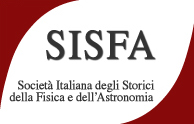Speaker
Description
The four different Moon's images in the Sydereus Nuncius were analysed by Guglielmo Righini with purely astronomical methods. The first image represented the waxing Moon on the fourth or fifth day after the new Moon. For dating the second and the third image G. Righini used a very original method. He claimed that lunar libration was detectable in Galileo’s images. Gingerich criticised these results as they refer to images which were too inaccurate for a quantitative analysis. Drake moved Righini’s date October 2, 1609 to January 1, 1610, and accepted other G. Righini’s dates. Whitaker confirmed Righini’s dates for the second and fourth images; for the third image, he confirmed Righini’s date if for “shortly before the last quarter” we mean one day before. For the first image, Whitaker proposed a different date: November 30, 1609. Gingerich and Van Helden took Whitaker’s chronology as definitive, except for the date of the second image (December 2, 1609 instead of December 3, 1609). More recently A. Righini revised G. Righini’s dates, using the JPL Horizon project website and the Stonyhurst disc, and corrected G. Righini's date of the first image from October 2, 1609 to December 1, 1609, with a mean absolute error of 2.5% in units of lunar diameter. In my communication, I will point out that the analysis of the images carried out with astronomical methods highlights how they are accurate enough to allow quantitative predictions. The results are consistent with dates obtained by other methods.

